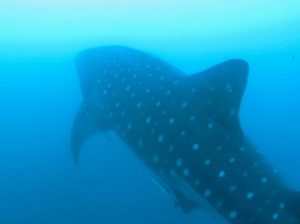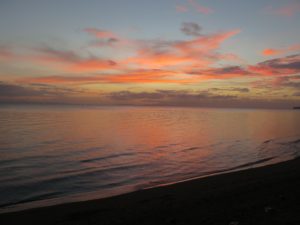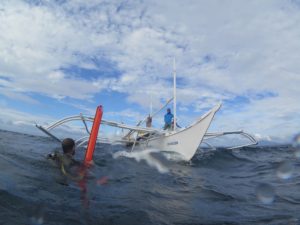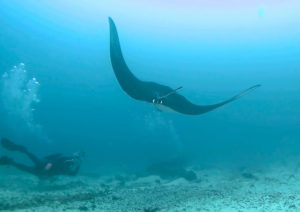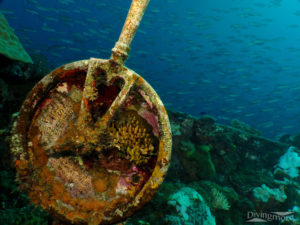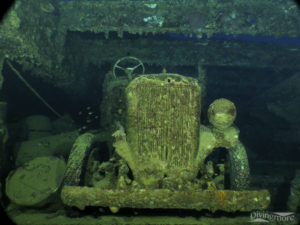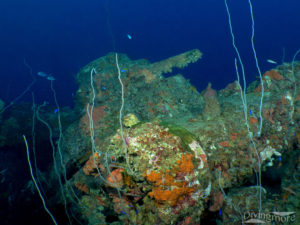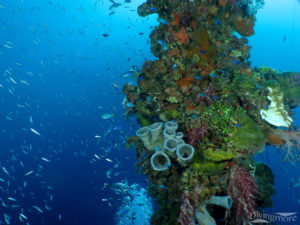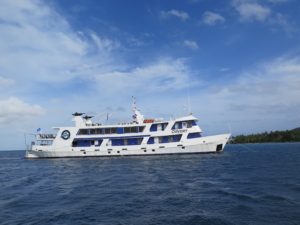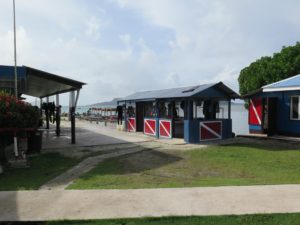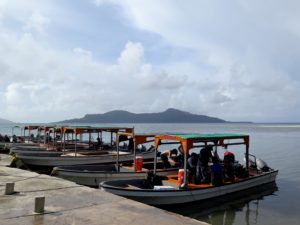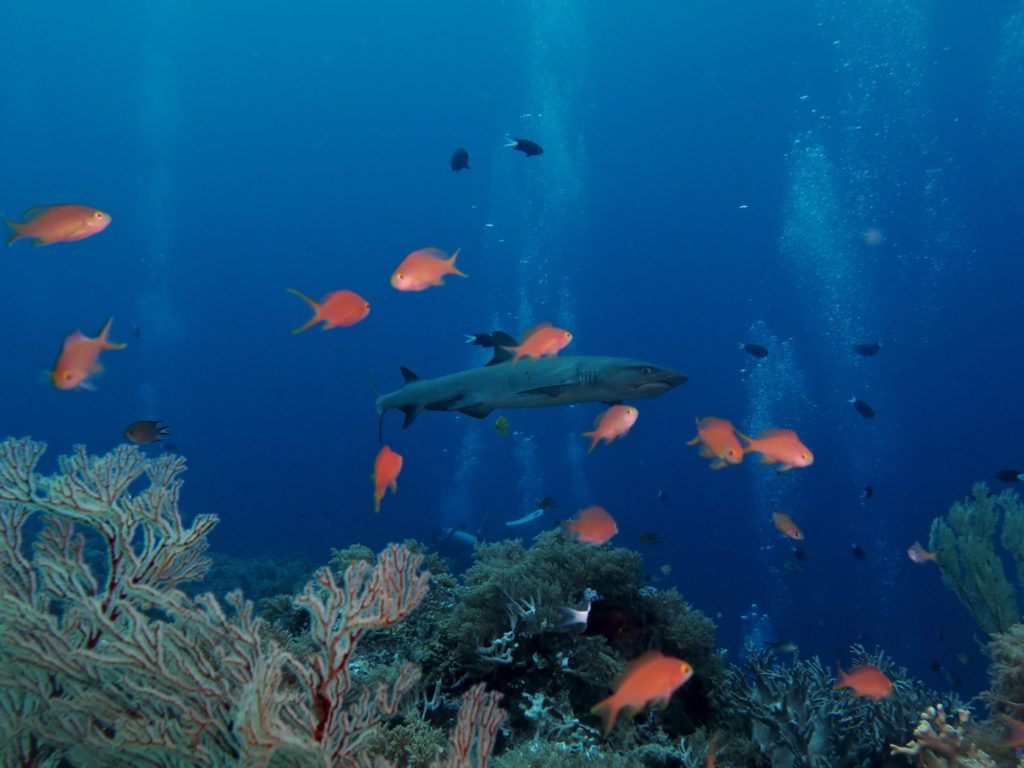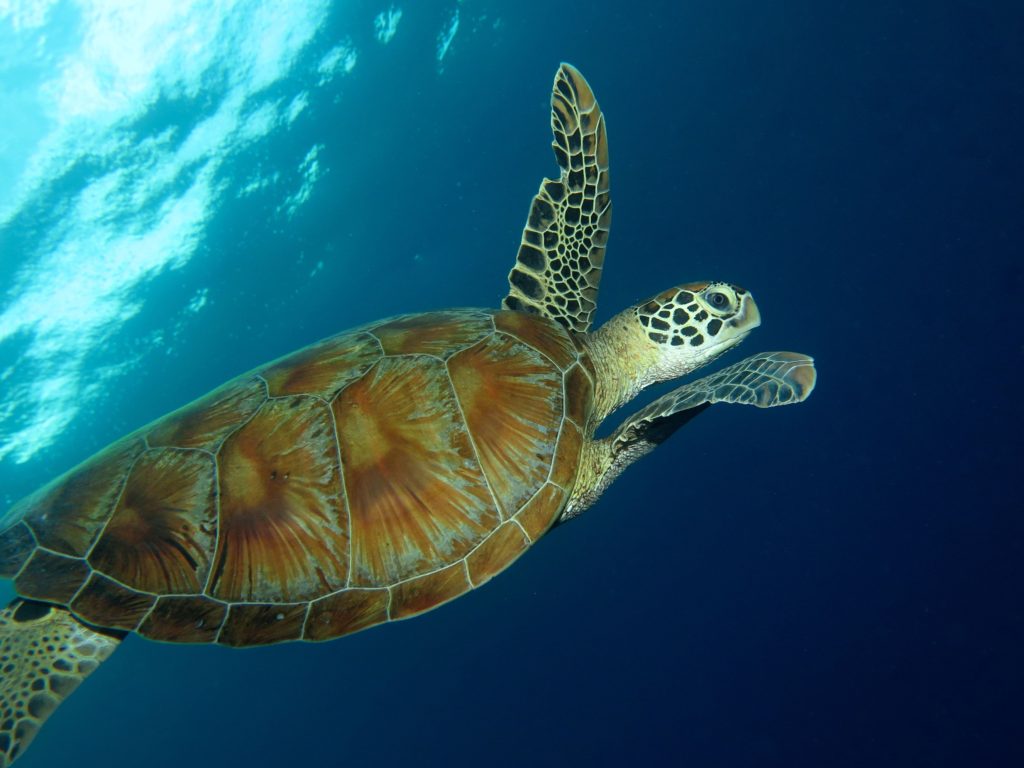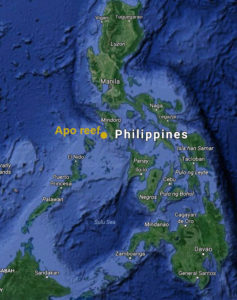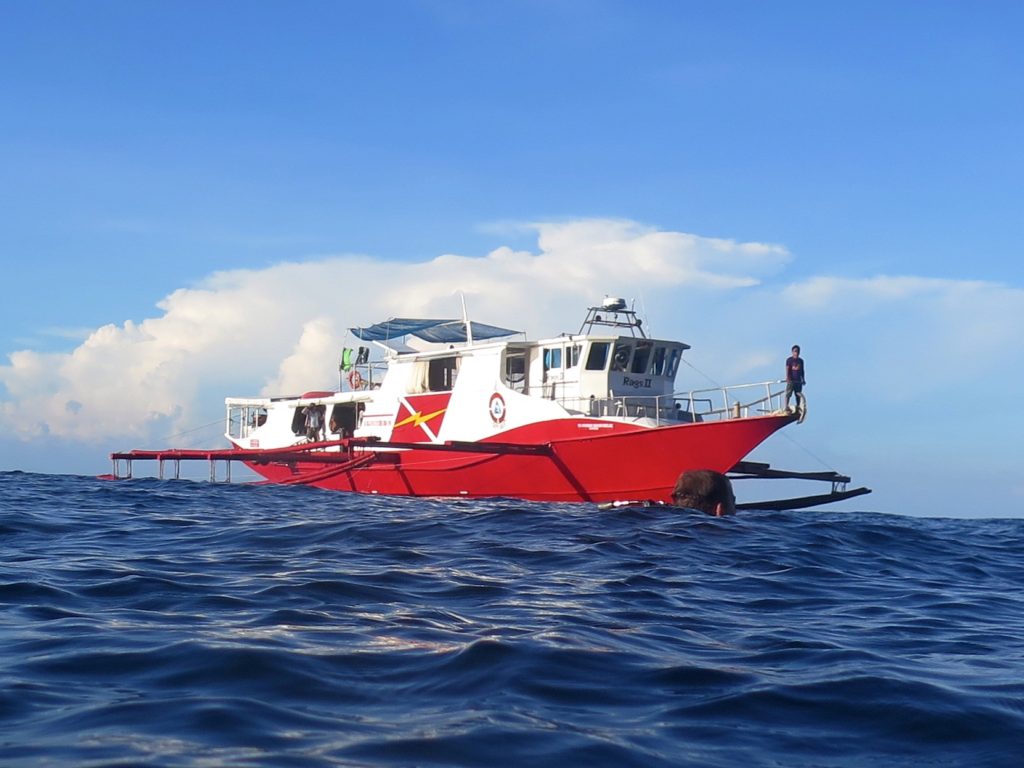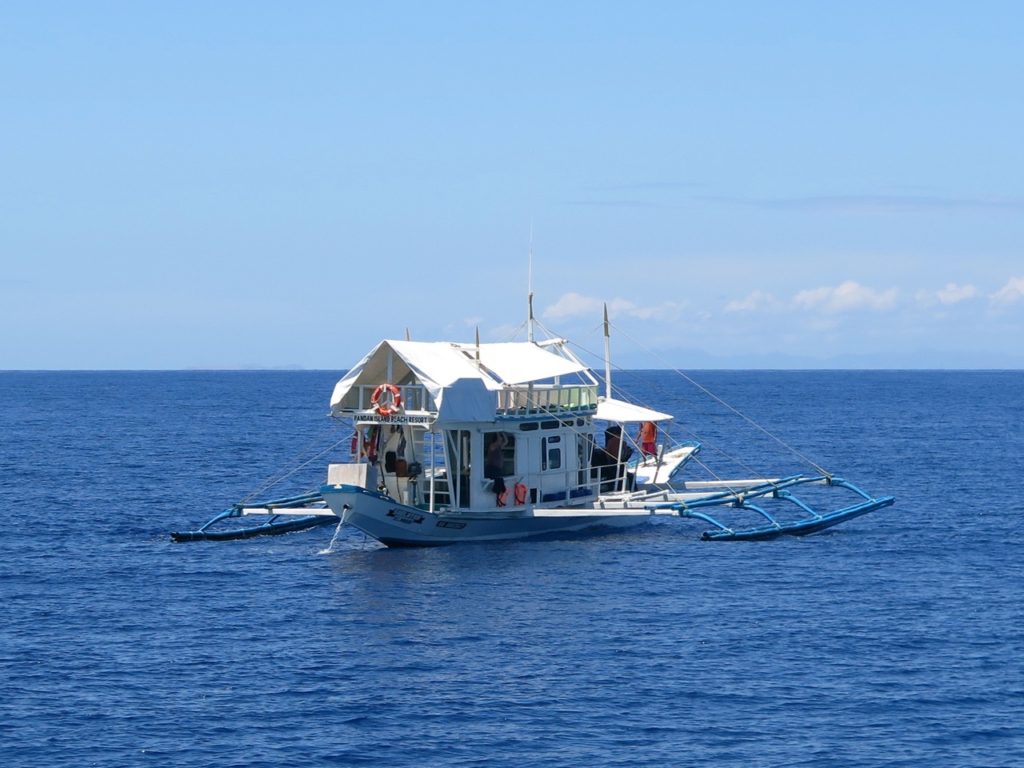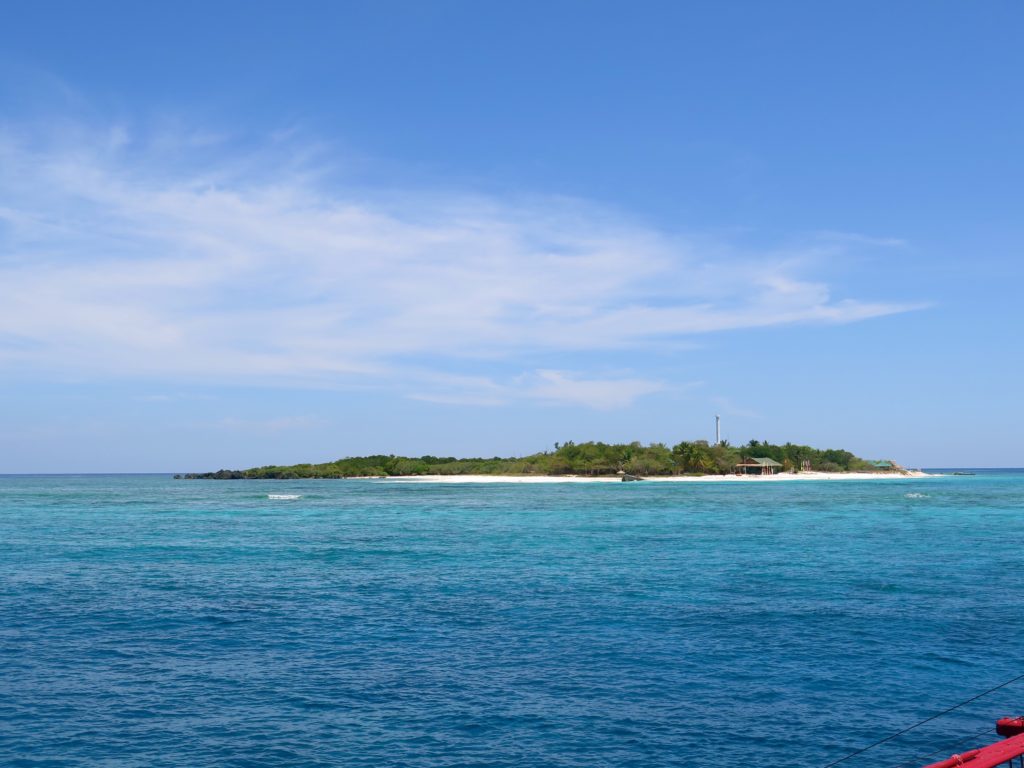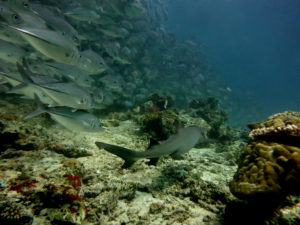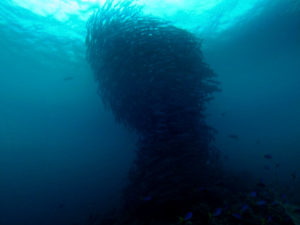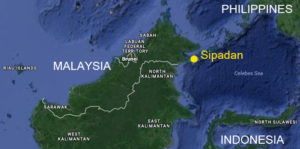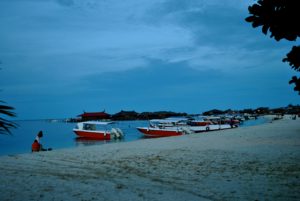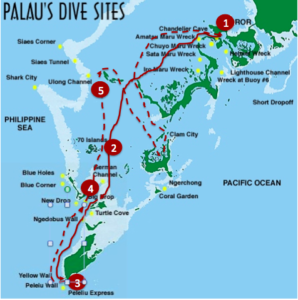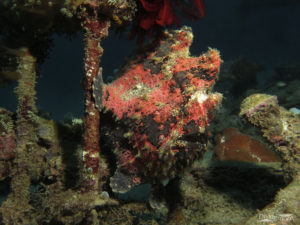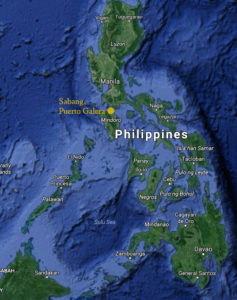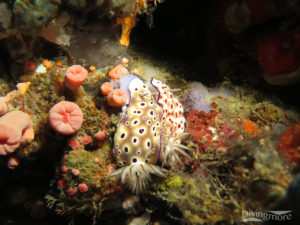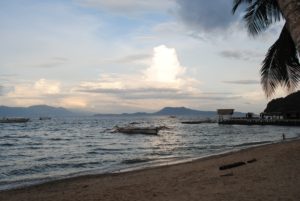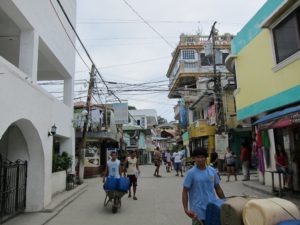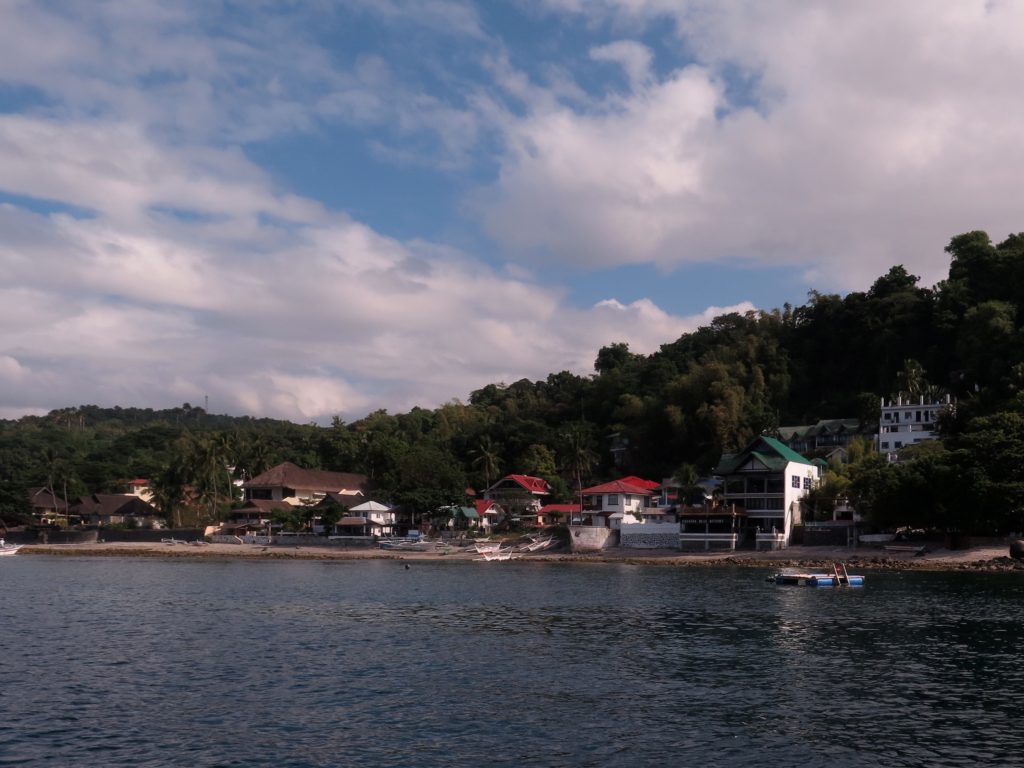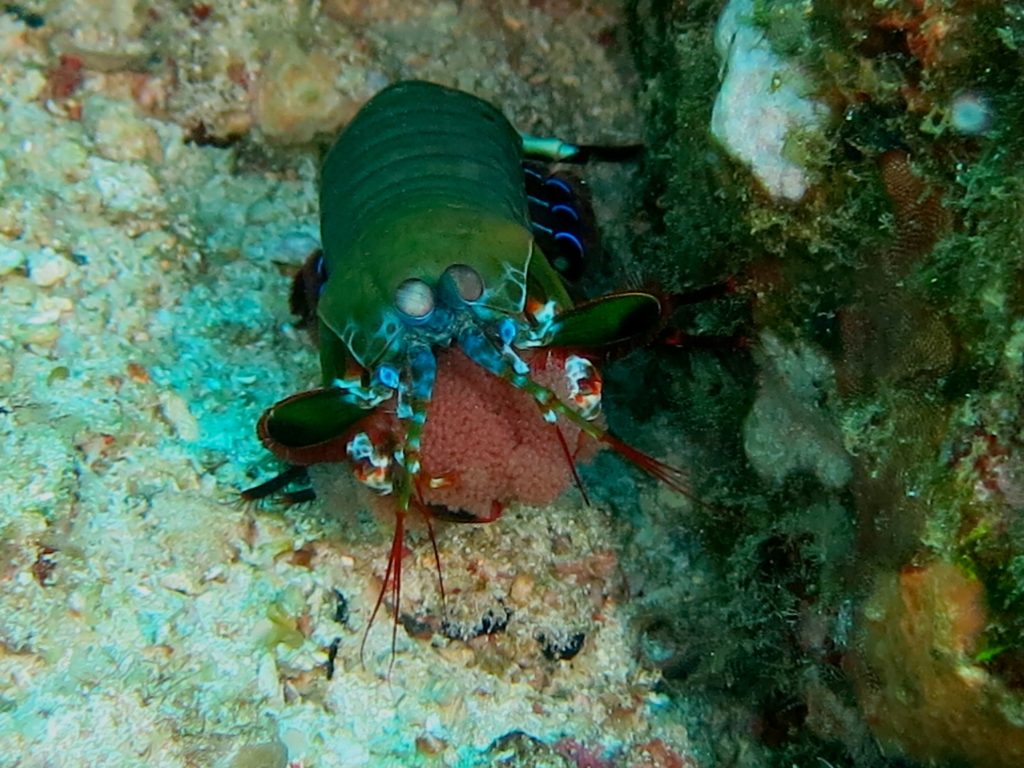Why go diving in Donsol
Donsol is one of the best places in the world to see whale sharks. Whale sharks aggregate in the area between December and June with peak season between February and May. In Donsol Bay whale sharks come up close to the surface to feed. Whale sharks are protected and it is only allowed to snorkel with them in Donsol Bay.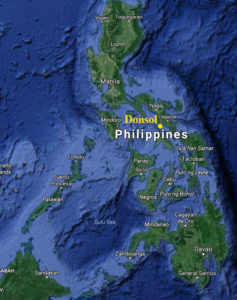
Manta Bowl is a shoal at about 20 meters deep in the middle of a channel between Luzon and Ticao islands. It is about 2 hours by banca from Donsol. We did three days of diving at Manta Bowl – and saw whale sharks, manta rays, eagle rays, white tip sharks, schools of jacks, tuna and juvenile barracuda. Visibility was reasonable at about 15 meters and water was on a cold side at C23. Currents at Manta Bowl are very strong and you need to use reef hooks to have a decent bottom time as current can push you off the shoal pretty quick. This was some of the best diving we have done in the Philippines and we definitely did not expect to see so many pelagics so near to the shore!
What to see
Logistics
There are two main options for diving Manta Bowl – one is to dive from Donsol another is to stay on Ticao island. Since we originally planned to also snorkel with the whale sharks and had only limited time we decided to stay in Donsol at Vitton hotel. It is on the shore with beautiful sunset views over the ocean, good food, basic clean and comfortable rooms, and within 50 meters of the whale shark interaction center which runs the whale shark snorkeling tours. It is also near to other resorts and the absolutely wonderful BARacuda restaurant. We had dinner there three nights in a row and they serve some of the best seafood we had in the Philippines – very simple fresh fish and prawns with nice salads and other sides.
We dove with Giddy’s place dive shop and had excellent experience. Our instructor Jeremie was highly professional, the trips were perfectly organized and his guiding was brilliant as we got to see whale sharks on 7 out of 9 dives and had good bottom times of about 45 minutes each dive. We liked that they were trying to make sure that divers had matching level of experience as we saw that other operators took everyone to dive Manta Bowl – even open waters with ten or so dives – which is scary considering currents.
Giddy’s resort is located in Donsol downtown. We were picked up every morning at 7:30am at our hotel and driven straight to the boat. Trip to Manta Bowl takes about 2 hours depending on the waves. Lunch, coffee, water and towels were provided on the boat. We did all three dives on Manta Bowl each day. Other option includes going to San Miguel island which reportedly has very nice reef and corals.
Donsol is a small town. There is one ATM but when we went to it on Sunday it already ran out of money so it is good to make sure to bring cash as most places (except Giddy’s) do not accept credit cards. Diving trips take pretty much all day coming back at about 5pm. We did not make it to the fireflies tour though heard good reports about it. We also did not make it to waterfalls or to Mayon volcano. We will need to come back for a longer stay next time!

